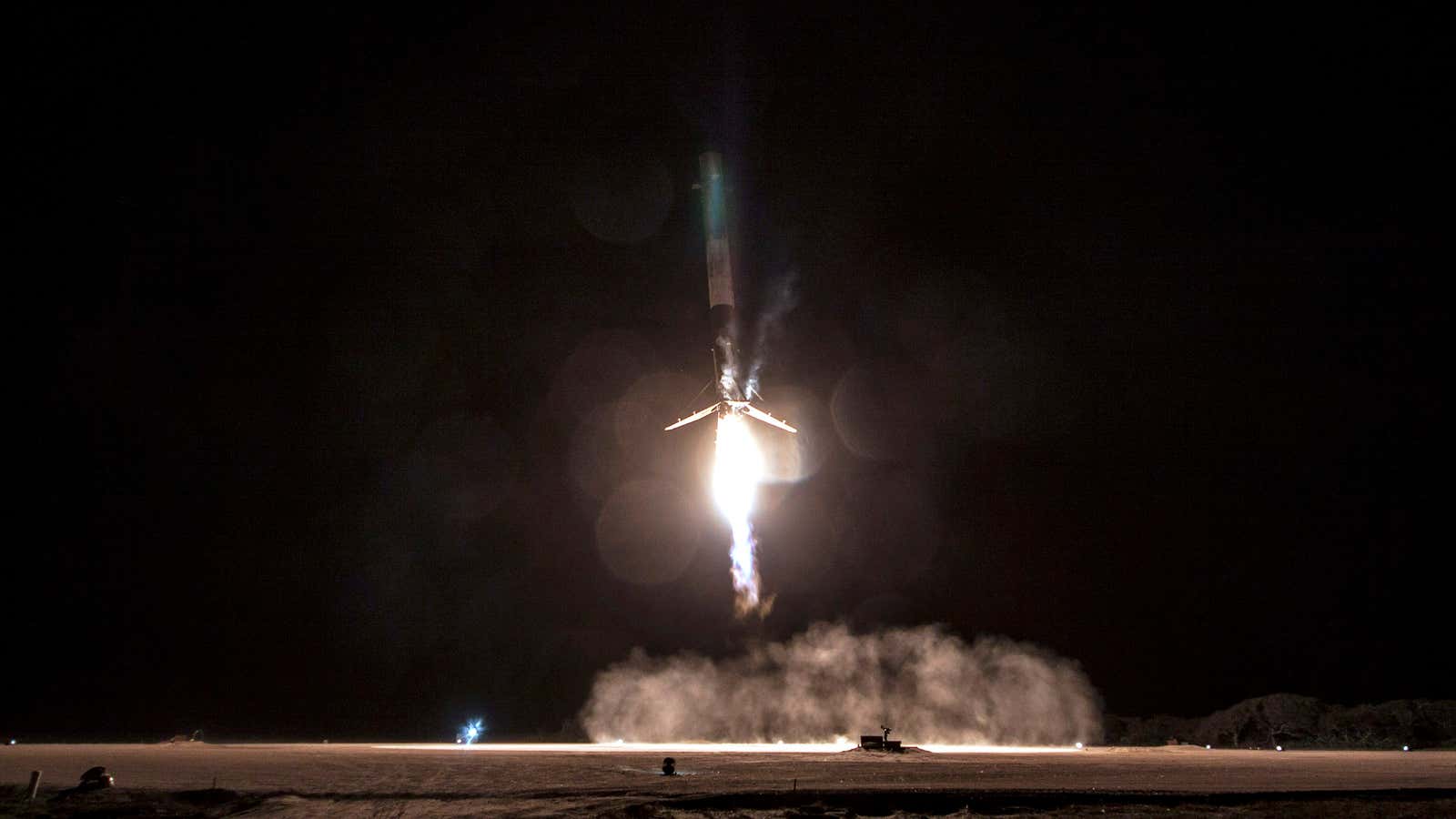Two years ago, the CEO of the world’s primary commercial rocket company thought Elon Musk’s idea of re-using rockets to bring cargo to space was “very uncertain.”
“Loss of performance related to recovery, lower industrial rate, cost of rehabilitation of the stage, difficulty in convincing customers to use a used launcher, uncertainties about reliability,” Arianespace chief Stéphane Israël said, ticking off his concerns. “It would be a mistake to consider reuse the alpha and omega of breaking innovation in the field of launchers.”
Things have changed, perhaps thanks to the spectacle of seven SpaceX rockets returning to Earth after delivering their cargo to orbit.
Now, the European space champion has a 15-person design team working on a rocket with a reusable second stage, intended to debut in 2030. The team is also focusing on deploying cost-saving manufacturing techniques like 3-D printing, according to the French business magazine L’Usine Nouvelle, or The New Factory.
The decision reflects how much the innovation of Musk’s SpaceX is driving competition in the rocket launch industry, despite setbacks that have raised concerns about the reliability of SpaceX’s Falcon 9 rocket, which costs about $62 million for one commercial launch.
Arianespace isn’t the only company revisiting its strategy in the wake of Musk’s advances. United Launch Alliance, the US joint venture of Lockheed Martin and Boeing, is another such firm. In 2014 the company brought in a new CEO, Tory Bruno, to cut costs and rethink the company’s approach of relying on Russian-made engines for single-use rockets. His vision for the company’s next decade also includes reusable rocket stages and ambitious ideas like manufacturing rocket propellant on the moon.
ULA has contracted with Blue Origin, Jeff Bezos’ space company, to build an engine for its next-generation rocket. Blue Origin is also dedicated to reusable rockets, having battled SpaceX in court over the intellectual property for such devices. Its New Shepard rocket was developed for use as a space tourism vehicle, bringing paying customers up to the edge of space and back down again at low cost. And in addition to designing the engine for ULA, Blue Origin is building a reusable orbital rocket called the New Glenn at a Florida factory.
NASA backed away from reusability after its own experience with the Space Shuttle, which though reusable was very expensive to refurbish in between flights. The US space agency’s plans to replace the vehicle have focused on large-scale, single-use rocket vehicles, but the smaller commercial development contracts it gave SpaceX resulted in technology that challenges that paradigm.
The embrace of reusable rockets across the space industry is a sign that other investors are doubling down on Musk’s bet—a bet that increased demand for access to space will reward companies that invest in more efficient vehicles.
Still, SpaceX has yet to actually fly one of its “flight-proven” rockets. A first launch is expected this spring, likely with a satellite built by the company SES, to fully demonstrate the system. With new concerns being raised about the durability of key engine components, the company still needs to assert that its vehicle can deliver after two years marred by accidents and delays.
But the company’s primary competitors aren’t waiting to see if SpaceX can pull off the feat before they try to catch up.
